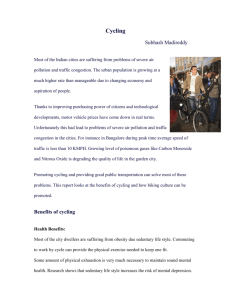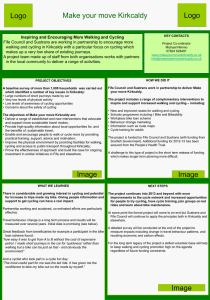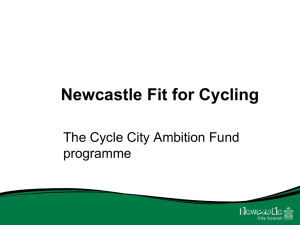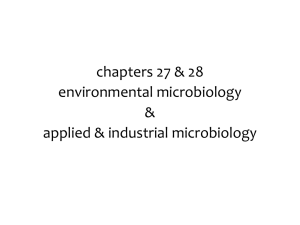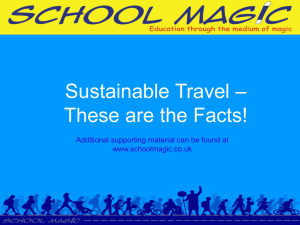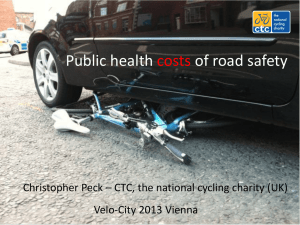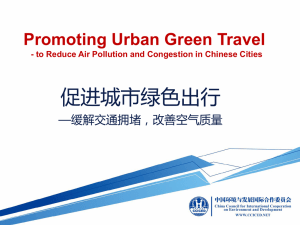now - Waverley Borough Council
advertisement
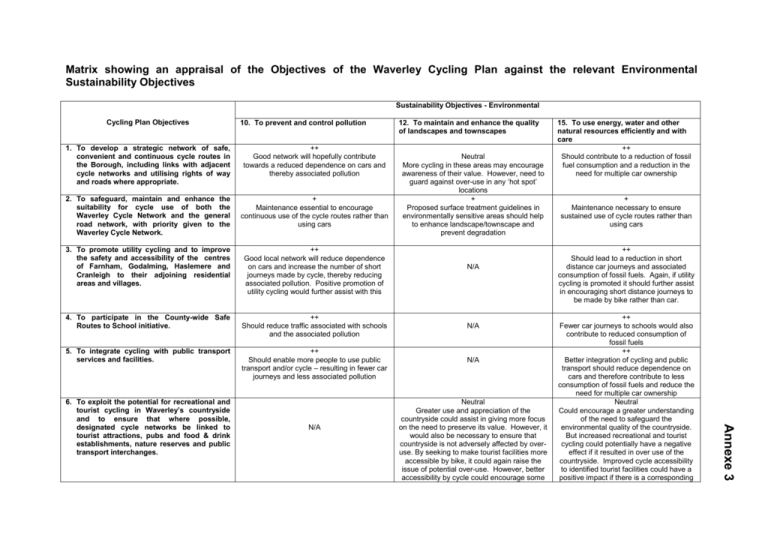
Matrix showing an appraisal of the Objectives of the Waverley Cycling Plan against the relevant Environmental Sustainability Objectives Sustainability Objectives - Environmental Cycling Plan Objectives 10. To prevent and control pollution 1. To develop a strategic network of safe, convenient and continuous cycle routes in the Borough, including links with adjacent cycle networks and utilising rights of way and roads where appropriate. ++ Good network will hopefully contribute towards a reduced dependence on cars and thereby associated pollution 2. To safeguard, maintain and enhance the suitability for cycle use of both the Waverley Cycle Network and the general road network, with priority given to the Waverley Cycle Network. + Maintenance essential to encourage continuous use of the cycle routes rather than using cars 3. To promote utility cycling and to improve the safety and accessibility of the centres of Farnham, Godalming, Haslemere and Cranleigh to their adjoining residential areas and villages. ++ Good local network will reduce dependence on cars and increase the number of short journeys made by cycle, thereby reducing associated pollution. Positive promotion of utility cycling would further assist with this 4. To participate in the County-wide Safe Routes to School initiative. ++ Should reduce traffic associated with schools and the associated pollution 5. To integrate cycling with public transport services and facilities. ++ Should enable more people to use public transport and/or cycle – resulting in fewer car journeys and less associated pollution N/A Neutral More cycling in these areas may encourage awareness of their value. However, need to guard against over-use in any ‘hot spot’ locations + Proposed surface treatment guidelines in environmentally sensitive areas should help to enhance landscape/townscape and prevent degradation N/A N/A N/A Neutral Greater use and appreciation of the countryside could assist in giving more focus on the need to preserve its value. However, it would also be necessary to ensure that countryside is not adversely affected by overuse. By seeking to make tourist facilities more accessible by bike, it could again raise the issue of potential over-use. However, better accessibility by cycle could encourage some 15. To use energy, water and other natural resources efficiently and with care ++ Should contribute to a reduction of fossil fuel consumption and a reduction in the need for multiple car ownership + Maintenance necessary to ensure sustained use of cycle routes rather than using cars ++ Should lead to a reduction in short distance car journeys and associated consumption of fossil fuels. Again, if utility cycling is promoted it should further assist in encouraging short distance journeys to be made by bike rather than car. ++ Fewer car journeys to schools would also contribute to reduced consumption of fossil fuels ++ Better integration of cycling and public transport should reduce dependence on cars and therefore contribute to less consumption of fossil fuels and reduce the need for multiple car ownership Neutral Could encourage a greater understanding of the need to safeguard the environmental quality of the countryside. But increased recreational and tourist cycling could potentially have a negative effect if it resulted in over use of the countryside. Improved cycle accessibility to identified tourist facilities could have a positive impact if there is a corresponding Annexe 3 6. To exploit the potential for recreational and tourist cycling in Waverley’s countryside and to ensure that where possible, designated cycle networks be linked to tourist attractions, pubs and food & drink establishments, nature reserves and public transport interchanges. 12. To maintain and enhance the quality of landscapes and townscapes modal shift from car to cycle 7. To link the Borough to the National Cycle Network. 8. To improve the quantity, quality and security of cycle parking facilities at convenient locations; 9. To raise public awareness of the environmental and health benefits to be gained from cycling. 10. To work with equestrian and pedestrian groups to enhance the ability of cyclists, walkers and horse riders to cross the A3 & A31. 11. To promote safe cycling and to make cycle training accessible to those who require it. + Has the potential to encourage more cyclists if awareness of the national cycle network is raised, thereby reducing need to travel by car + May encourage more cycling (and fewer car journeys) by making people feel safer when parking cycles at stations, town centres etc. + May encourage more cycling once people learn of the health and environmental benefits, thereby reducing need to travel by car N/A + Should contribute to more journeys being made by pollution free cycle if confidence is improved as a result of training N/A N/A N/A N/A N/A reduction in access by car. + May encourage more people to cycle on the national network, again contributing to a reduction in the need to travel by car + May encourage more people to cycle rather that drive if there are more and safer facilities for cycle parking + Greater understanding of the environmental benefits of cycling may also contribute to a reduction in car use and associated consumption of fossil fuels N/A + If confidence is increased then more people may be encouraged to make journeys by cycle rather than car, again contributing to reduced consumption of fossil fuels
